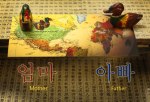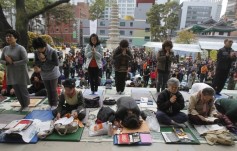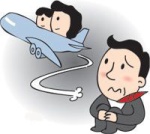Travelling thousands of miles to attend university in a more developed country is nothing new: China and India combined sent over 260,000 students to the United States in 2011, making up a staggering 36% of all international students. It’s not surprising that these emerging economies along with other developing nations want to send their youth to highly regarded universities abroad. Surprisingly, South Korea, now a DAC donor, also sends vast numbers of students to study at universities in English speaking countries, with 73,351 in the U.S. alone. However, South Korea distinguishes itself by not only sending university aged children, but elementary, middle, and high school children as well.

In South Korea, the 15th largest economy with the fastest and widest broadband internet coverage, and some of the top performing students, a mass “education exodus” is taking place. An estimated 200,000 middle class families are sending their pre-college children overseas to be educated in Western countries; most often New Zealand, Australia, the U.S., Canada, and the U.K.

Sending children abroad to boarding schools and universities was once an option exclusive to a small group of elite families, but today, early study abroad is widespread among middle class families: the children, often accompanied by their mothers, attend public schools in English speaking countries, while the fathers remain in Korea to support them. These families are known as “kirogi kajok” in Korean, or “goose families.” The “goose” refers to the seasonal visits reuniting the separated families – the way geese migrate each year. This arrangement has become so widespread that in 2004, the phrase “goose family” was added to the Korean dictionary!
Despite the enormous financial, emotional, and cultural strain felt by families that are separated, these parents believe sending their children abroad at a young age will give them an escape from the notoriously cutthroat Korean school system and an opportunity to master English, a mark of high status which influences everything from university acceptances, jobs, and even marriage prospects.

It is because goose families value education so highly that they send their children overseas. As CGP discussed earlier, education is of paramount importance in Korean culture and society; in turn, this mindset has given way to both one of the most highly educated societies, and one of the most competitive. South Korea has the 6th most educated populace in the world with 39% of the population holding a post-secondary degree— an amazing feat for a country ravaged by civil war less than 60 years ago. However, this explosive development has coincided with and given rise to an exceptionally rigorous educational system. The end-all university entrance exam is so critical to students’ futures, that on exam day parents crowd churches and temples to pray for their children’s success, offices and the stock market open later so students can get to the exam on time, and air planes are grounded to reduce the noise. Unsurprisingly, students crack under the pressure: South Korea has the highest student suicide rate and students are the unhappiest among OECD countries.
While, other countries might be alarmed with so many students exiting the country for a Western education, South Korea can rest assured this is not a case of a “brain drain” rather a beneficial “brain gain” for the future of the country. Goose families do not stay separated forever, rather, children are expected to eventually return home to Korea, so that after years in the West, their flawless English and Western education, a powerful status symbol in the image conscious country, will escalate them to the top of the professional and social ladder in Korea; and in turn continue to develop and innovate their country.

Yet, when goose families do go abroad with the goal of giving their children advantages and opportunities not available in Korea, they face unexpected emotional hardships: the child lives apart from one or both parents; the mother struggles to adjust to a new language and culture while trying to take on “the father’s roles”; and the father lives alone in Korea working to send as much money as possible to his family, only to come home to a dark empty house. Depression among members is commonly reported, and suicide is not unheard of either.
Education comes with a price everywhere, and the increasing frequency of Korean goose families is one of the many examples of the great lengths parents are willing to sacrifice for their children’s future.

True, this is a social phenomenon in Koera, leading to several concerning social issues.